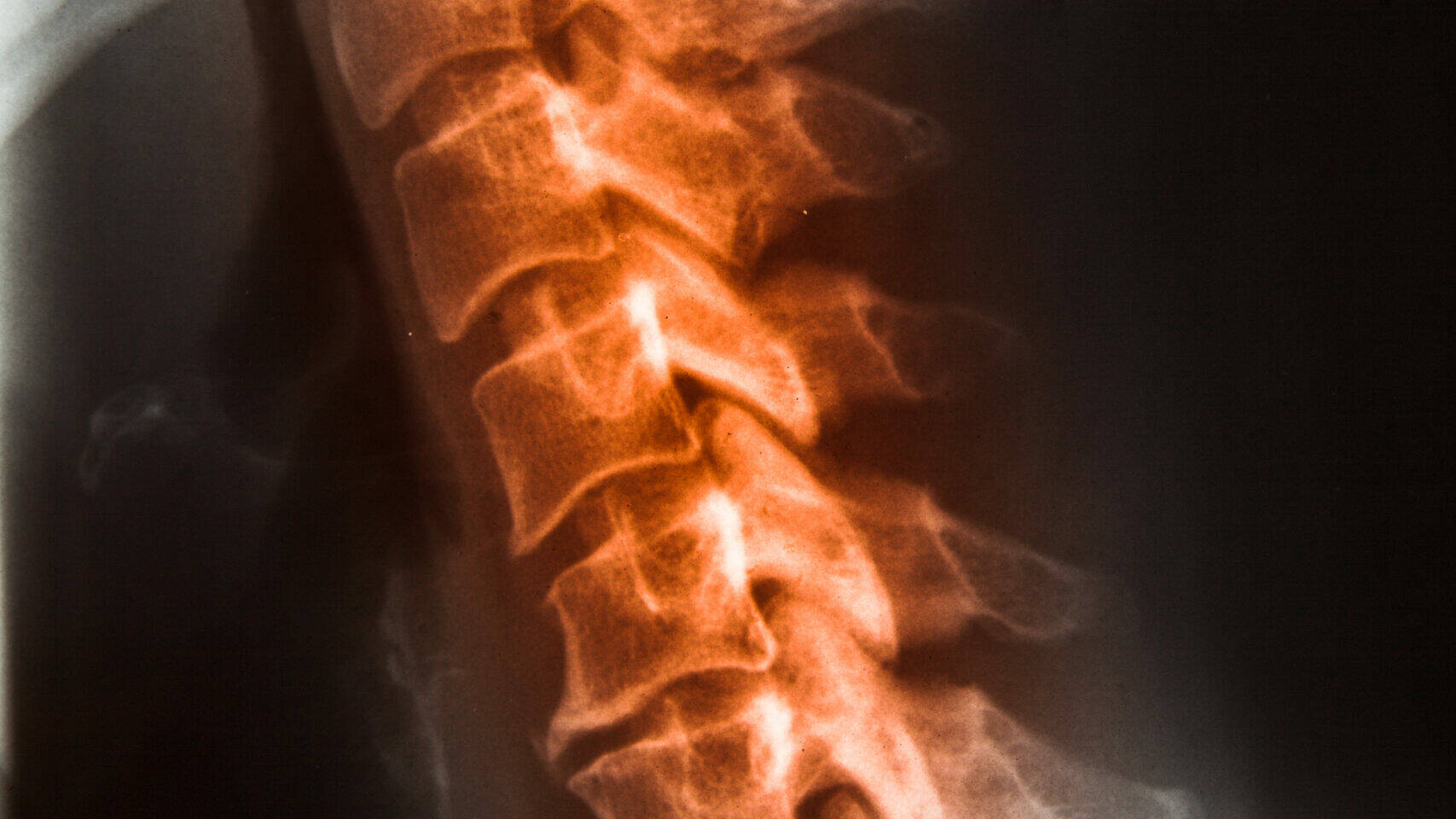Chiropractic care is a noninvasive and holistic approach to addressing various health issues, ranging from back pain to headaches. You may ask, “Do Chiropractors have X-ray machines?” One crucial aspect of chiropractic diagnosis and treatment is, in fact, the use of X-rays. In this article, we’ll explore the role of Chiropractic X-rays in effective diagnosis and treatment and, most importantly, highlight their importance and benefits.
A Chiropractic x-ray is a powerful tool for an integrative Chiropractor to assess patients’ underlying conditions. X-rays provide valuable insights into the alignment of the spine and joints. These insights enable chiropractors to identify misalignments or abnormalities contributing to the patient’s symptoms. It’s vital to have a clear view of a patient’s “problem areas.” X-rays help chiropractors develop personalized treatment plans that target the root cause of issues.
One key advantage of a Chiropractic X-ray is identifying conditions that are not visible through physical examinations alone. This diagnostic tool allows chiropractors to detect underlying structural issues or joint degeneration that may require specific treatment approaches.
By incorporating a Chiropractic x-ray into the diagnostic process, we can accurately diagnose your condition and provide the proper treatment. With their expertise and these diagnostic images, chiropractors can provide the best possible care and help patients achieve improved overall health and well-being.
Table of Contents
ToggleImportance of Chiropractic X-rays
Accurate diagnosis is vital for a Denver Chiropractor to provide effective treatment. While physical examinations can provide valuable information, they may reveal only some of the extent of an individual’s condition. A Chiropractic X-ray plays a vital role in allowing the Chiropractor to see the actual state of your joints. Chiropractic X-rays give a comprehensive view of the musculoskeletal system, helping us identify the actual cause of your discomfort or pain.
Chiro X-rays, or radiographs, are diagnostic imaging that uses low radiation levels to produce detailed images of the body’s internal structures. These X-rays focus on the spine and surrounding joints, allowing a Denver integrative Chiropractor to assess the alignment and condition of the skeletal system. A Chiropractic x-ray provides valuable insights into misalignments, degeneration, or abnormalities affecting a patient’s well-being by capturing images of the bones and joints.
Because Chiropractic X-rays use minimal amounts of radiation, they are safe, non-invasive, and minimize potential risks. We follow strict safety guidelines to ensure your well-being and limit unnecessary exposure. Our office also utilizes digital chiropractic X-ray technology to provide excellent images, fewer “retakes,” and less radiation exposure.
Benefits of Chiropractic X-rays in Diagnosis
Another key advantage of chiropractic X-rays is their ability to identify conditions that may not be visible through physical examinations alone. This diagnostic tool allows chiropractors to detect underlying structural issues or joint degeneration that may require specific treatment approaches. By pinpointing the root cause of a patient’s symptoms, chiropractors can develop personalized treatment plans that address the underlying issues and provide long-term relief.
Furthermore, chiropractic X-rays visually represent the patient’s progress over time. By comparing previous and current X-ray images, an integrative Chiropractor can assess the effectiveness of their treatment plans and make necessary adjustments to optimize results. X-rays can help ensure patients receive the most appropriate care tailored to their needs.
Different Types of Chiropractic X-rays
Depending on the patient’s condition and symptoms, chiropractors may take chiropractic X-rays. These include:
1. Full-spine X-rays: These X-rays capture images of the entire spine, from the neck to the lower back. They provide a comprehensive view of the vertebral column, helping chiropractors identify any misalignments or abnormalities along its length.
2. Cervical X-rays: These X-rays focus specifically on the cervical spine (neck region). They can reveal structural issues or degeneration in the neck area, which can contribute to headaches, neck pain, or radiating discomfort.
3. Lumbar X-rays: Lumbar X-rays target the lower back region, providing valuable information about the alignment and condition of the lumbar vertebrae. These X-rays are beneficial for diagnosing lower back pain and identifying any contributing factors.
4. Specific Joint X-rays: In some cases, chiropractors may order X-rays of specific joints, such as the hips or shoulders, to assess their alignment and condition. These X-rays help determine if there are any underlying issues affecting the joint’s function and mobility.
Should a Chiropractor Take X-rays Before Treatment?
Even though today’s digital x-ray machines are incredibly safe and expose people to minimal radiation, not every patient should get Chiropractic X-rays. If any of the scenarios below apply, you are a candidate for Chiropractic X-rays.
- You are over 55: Osteoarthritis is the most common form of arthritis. This type of arthritis results from “wear and tear” on the joints that can occur from injuries or years of the same repeated activity. Medical experts estimate that over 80% of adults over the age of 55 have osteoarthritis, but only 60% have symptoms they can notice or feel. X-rays are the only way to diagnose osteoarthritis accurately.
- Trauma: We see all types of injuries in our office. Slips, falls, sports injuries, and work accidents can all cause injuries that may need X-rays. While an X-ray won’t show the condition of joint tissue (MRIs are best for that), you can see the general health of the joint and determine if there is a misalignment (subluxation) that needs to be addressed.
- Insidious onset: If your pain or complaint begins for no apparent reason, taking X-rays to determine the cause is essential. While it is rare to see instances of cancer or other life-threatening conditions in most Chiropractors’ offices, they do happen. An old chiropractic saying about taking X-rays is: “To see is to know, and not to see is to guess.”
- Pain for more than six months: A condition lasting more than six months is medically defined as chronic. Addressing any problem as early as possible will help prevent it from becoming a chronic issue. If your car is out of alignment, the tires will wear unevenly and eventually must be replaced. The same thing will happen to the joints in the body. However, replacing a joint is expensive, painful, and will not work nearly as well as the original. We must maintain the best joint function we can to prevent joint degeneration.
- Radiating pain: When the nerves that exit between the vertebrae are pinched with as little as 10-15 mmHg of pressure (the weight of a dime). The symptoms of nerve pressure include aching, burning, numbness, tingling, and weakness radiating wherever that nerve goes. X-rays will show the spine’s condition where the radiating pain starts, ensuring the proper treatment is provided.
- Auto accidents: If you have been in an auto accident, it is crucial to take X-rays. X-rays will help determine the severity of your injuries but also help show the seriousness of your injuries. Suppose you must involve attorneys and insurance companies to help pay for your treatment. In that case, everything must be documented to ensure you get the settlement you need to pay for your care, pain, and suffering.
How Chiro X-rays Aid in Treatment Planning
By incorporating a Chiropractic X-ray into the diagnostic process, chiropractors can accurately evaluate the patient’s condition and deliver targeted and effective treatments. With their expertise and these diagnostic images, chiropractors can provide the best possible care and help patients achieve improved overall health and well-being.
Once the integrative Chiropractor has reviewed the X-ray images and identified any misalignments or abnormalities, they can develop a personalized treatment plan. Your treatment may involve a combination of spinal adjustments, acupuncture, shockwave therapy, therapeutic exercises, and lifestyle recommendations aimed at correcting your underlying issues and promoting optimal health.
Chiropractic X-rays also enable chiropractors to track their treatment progress over time. By comparing X-ray images before and after treatment, chiropractors can objectively measure improvements in spinal alignment, joint mobility, and overall health. This feedback helps the Chiropractor and the patient understand the effectiveness of the treatment plan and make any necessary adjustments.
Safety Considerations and Guidelines for Chiropractic X-rays
Although Chiropractic X rays are generally safe, following specific guidelines to minimize potential risks is essential. Chiropractors will always use the lowest dose of radiation possible, which still provides clear images. They also take precautions to protect patients from unnecessary radiation exposure, such as using lead aprons and shields.
Additionally, chiropractors carefully consider the need for X-rays on a case-by-case basis. They weigh the potential benefits of obtaining diagnostic information against the risks associated with radiation exposure. If X-rays are deemed necessary, the Chiropractor will ensure that the benefits outweigh the possible risks and ensure their treatments are safe and appropriate for each patient, minimizing the risk of complications and optimizing outcomes.
Chiropractors adhere to established safety protocols and guidelines when performing X-rays to address concerns about radiation exposure. Modern digital x-ray technology allows for lower radiation doses and higher image quality, minimizing patient risk while maximizing diagnostic accuracy. Additionally, chiropractors undergo rigorous training in radiation safety and proper imaging techniques to ensure that X-rays are performed safely and effectively.
Patient education also plays a crucial role in mitigating concerns about X-ray safety. By explaining the rationale behind X-ray imaging and discussing the minimal risks involved, chiropractors can alleviate patient anxiety and foster trust in the diagnostic process. Open communication and transparency regarding x-ray procedures help patients make informed decisions about their care and feel confident in their chiropractor’s expertise.
The Process of Taking Chiro X-rays
The process of taking Chiro X-rays is straightforward and generally quick. Placing the patient in a specific position ensures high-quality Chiropractic X-rays. We will always confirm the patient is comfortable. We may ask them to hold their breath momentarily to reduce any potential blurring of the images.
A Chiropractic X-ray shows misalignments and abnormalities in addition to degenerative changes. Based on the findings, they will develop an individualized treatment plan tailored to the patient’s needs and goals.
Interpreting a Chiropractic X-ray requires specialized training and expertise. Chiropractors undergo extensive education to develop the skills to analyze X-ray images accurately. They assess the alignment of the vertebrae, the condition of the discs, and the overall health of the spinal structures.
When interpreting a Chiropractic X-ray, Chiropractors can identify any underlying issues contributing to a patient’s symptoms. X-rays allow chiropractors to provide targeted treatments that address the root cause of the problem rather than merely alleviating the symptoms. While a Chiropractic X-ray is not required for treatments like Acupuncture, Shockwave therapy, or Dry Needling, they are essential for assessing the health of joints.
Bone Health Assessment
Besides diagnosing specific musculoskeletal conditions, a Chiropractic X-ray is crucial in assessing overall bone health. X-rays can detect conditions such as arthritis, fractures, osteoporosis, and congenital disabilities, providing valuable insights into the patient’s skeletal structure and integrity. This information allows chiropractors to tailor their treatment approach to address the immediate symptoms and underlying bone health issues, ultimately promoting long-term musculoskeletal wellness.
Structural Evaluation
A Chiropractic X-ray offers detailed insights into the structure of the spine and extremities, enabling chiropractors to identify postural abnormalities, spinal misalignment, degenerative changes, and other structural issues. By assessing factors such as posture, spinal curvature, and joint alignment, chiropractors can develop targeted treatment plans to correct bio-mechanical imbalances and improve overall structural stability and function. Losing the “curve” (lordosis) of the cervical or lumbar spine can cause neck pain, headaches, lower back pain, and sciatica.
Integrating Films with Other Diagnostic Tools
While a Chiropractic X-ray provides valuable insights into the condition of the joints in the body, we will occasionally use other diagnostic tools to evaluate your condition. An integrative Chiropractor may also utilize physical examinations, medical history evaluations, and functional assessments to understand their patient’s condition. Our Denver Chiropractor finds taking X-rays for arthritis is the most accurate way to determine the severity of that condition.
By integrating various diagnostic tools, chiropractors can obtain a holistic view of the patient’s health and address all contributing factors. This multidimensional approach allows for more accurate diagnoses and personalized treatment plans catering to each patient’s needs.
Monitoring Treatment Progress With Chiro X-rays
Chiropractic X-rays are vital in tracking patients’ progress throughout their treatment journey. Comparing initial X-rays with later ones allows Chiropractors to assess improvements and make necessary adjustments to the treatment plan. This ongoing monitoring ensures that the patient’s progress is on track and allows Chiropractors to identify any potential issues that may require additional attention or modifications to the treatment approach. Additionally, Chiropractic X-rays provide visual evidence of the effectiveness of Chiropractic care, empowering patients to participate actively in their healing process.
Should a Chiropractor Take X-rays Before Treatment?
Despite the significant benefits, some in the Chiropractic profession have debated using Chiropractic X-rays. Some chiropractors advocate for routine X-ray screenings to enhance patient outcomes. In contrast, others reserve Chiropractic X-rays for specific conditions. This discrepancy underscores the importance of evidence-based practice and the need for chiropractors to use clinical judgment in determining when X-rays are needed.
The decision to perform Chiropractic X-rays should always be based on clinical necessity and the patient’s benefit. While X-rays provide valuable diagnostic information, they shouldn’t be used unnecessarily or in place of a thorough exam. Instead, Chiropractors carefully weigh the potential benefits of X-ray imaging against the risks of radiation exposure and the costs involved, ensuring each patient receives the most appropriate and effective care.
Can Chiropractors Prescribe X-rays?
Most insurance plans cover Chiropractic X-rays, making them accessible to patients seeking chiropractic care. In cases where further imaging is necessary, chiropractors can refer patients for additional diagnostic procedures. MRI or CT scans provide comprehensive evaluation and treatment. By coordinating with other healthcare providers, Chiropractors ensure their patients get the correct imaging studies done. Searching for “chiropractors that take X-rays near me” is a great start, but X-rays are only part of the process.
A common question is, “Does the Joint Chiropractic take X-rays?”. Not all Chiropractic offices can take X-rays, and they must refer their patients to another office. Integrative Health and Rehabilitation uses digital X-rays to get the best-quality images, saving patients time and money and limiting radiation exposure to patients.
The Role of X-rays in Effective Diagnosis and Treatment
Chiropractic X-rays are crucial in effectively diagnosing and treating various musculoskeletal conditions. A Denver Chiropractor will accurately assess a patient’s alignment using these diagnostic images. Chiropractor X-rays also identify misalignments or abnormalities that may be causing discomfort or pain. Understanding the spine’s condition allows Chiropractors to develop personalized treatment plans to target the cause of your pain. This is vital when promoting long-term relief and improved overall health.
Furthermore, a Chiropractor with X-rays has one more tool to track a patient’s treatment progress objectively. Chiropractor X-rays allow Chiropractors to measure the effectiveness of their interventions and make any necessary adjustments. By integrating Chiro X-rays with other diagnostic tools, chiropractors can comprehensively understand the patient’s condition. This allows the Chiropractor to create a tailored treatment plan to address your concerns.
Chiropractic X-rays are invaluable tools in the hands of skilled chiropractors. They provide valuable diagnostic information, aid in treatment planning, and contribute to the overall success of chiropractic care. By combining expertise, personalized care, and Chiropractic X-rays, chiropractors can help patients achieve optimal spinal health and improved well-being.
Experiencing Back pain, Neck Pain, or Headaches? Contact us!
Still have questions about Chiropractic X-rays? Searching for a “chiropractor that takes X-rays near me”? Specifically looking for a Chiropractor in Denver? Contact us! Still not sure? Please read some of our 5-Star Google reviews to see why we are the chiropractor Denver seeks for fast, effective, and lasting pain relief. We’ve been helping patients in Arvada, Denver, and Wheat Ridge, Colorado, for over 20 years. Learn more about the conditions and benefits of our treatments on our Health Articles page. Ready to start feeling better? Book an appointment online at our affordable Chiropractic clinic today!

Ready for an expert opinion? Get in touch today!
With a legacy of more than 25 years, our team specializes in helping individuals triumph over back pain, neck discomfort, and persistent headaches, all without relying on addictive medications or risky surgical procedures.






